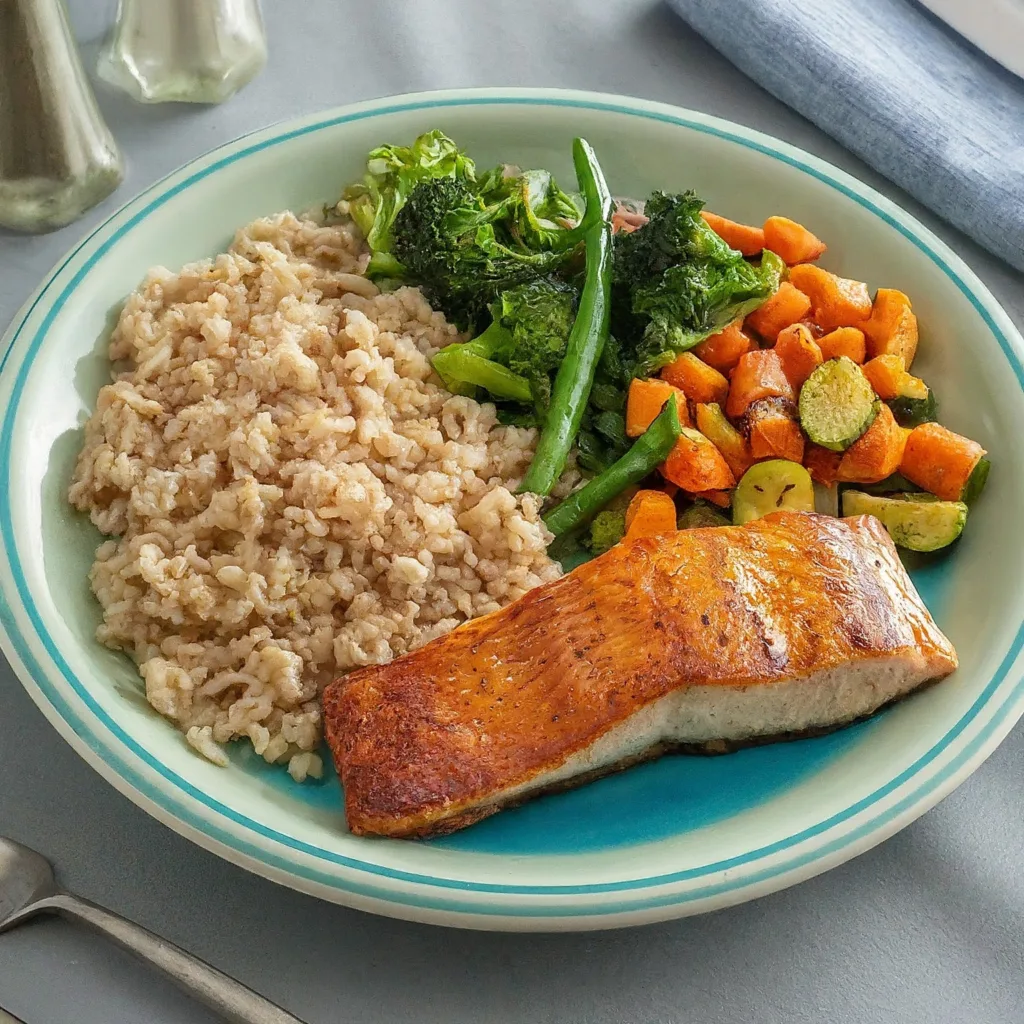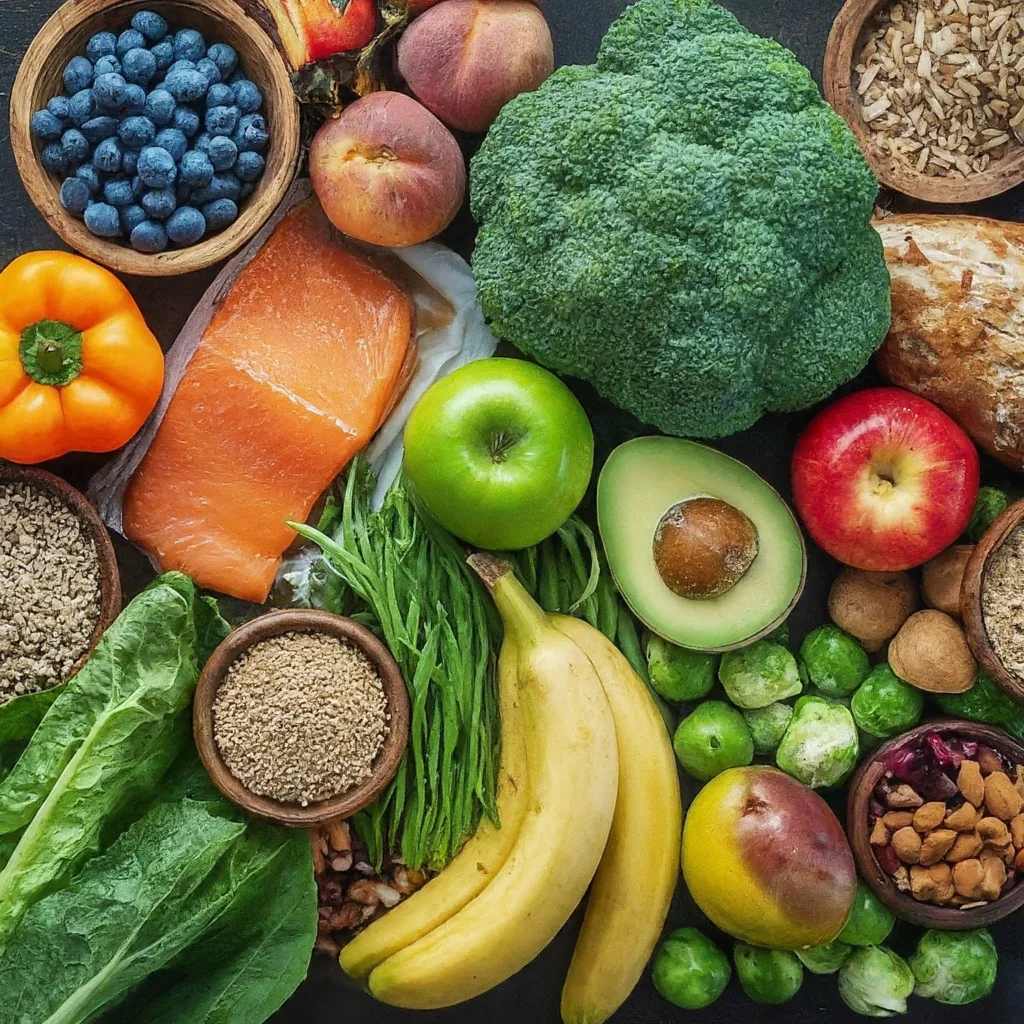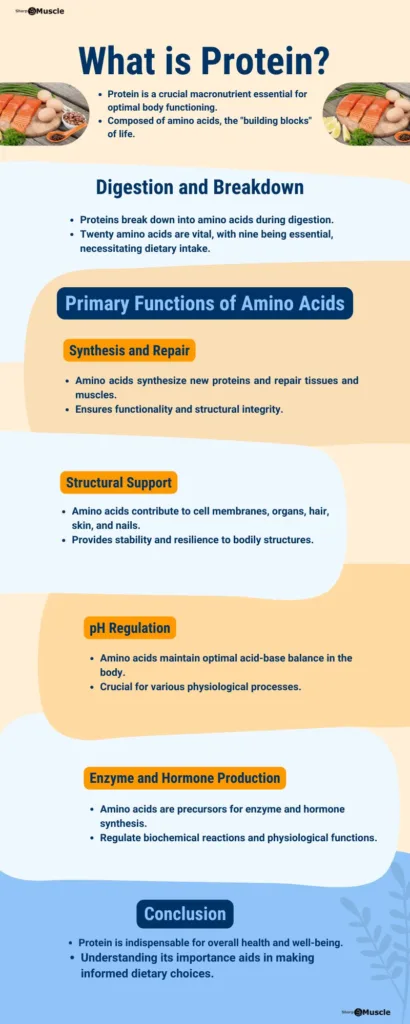Reverse dieting is a common way of referring: The diet after the diet, Metabolic restoration, Gradual calorie increase, Reverse cutting, and Metabolic rebound.
The term suggests that it’s a way to transition from a restrictive diet to a more normal caloric intake in a controlled and gradual manner. The goal is to restore metabolism and prevent weight regain, while also improving energy levels.
Eating less and working out more can be an effective way to lose weight initially, but it’s not a sustainable approach over the long term. As you cut calories further, your body’s metabolism may slow down, making it harder to lose weight. At some point, continuing to eat less and work out more can actually lead to burnout, decreased energy levels, and other health problems.
That’s where reverse dieting can come into play. By gradually increasing caloric intake, reverse dieting can help restore metabolism, improve energy levels, and prevent weight regain.
Reverse dieting can be an effective method for increasing energy levels and maintaining weight loss, but it’s important to note that it’s not a one-size-fits-all approach. Whether or not reverse dieting will be helpful for weight loss depends on individual factors such as the person’s starting point, their weight loss goals, and their current eating habits.
For individuals who have been following a very low-calorie diet for an extended period of time, reverse dieting can help to restore their metabolism and prevent the metabolism from slowing down further. This can lead to an increase in energy levels and a better ability to maintain weight loss over time.
What is Reverse Dieting?
Reverse dieting is a nutrition and diet strategy that involves gradually increasing the amount of food you eat over time, with the goal of boosting your metabolism and restoring metabolic function. 1 This approach is often used by bodybuilders, fitness athletes, and individuals who have been following a calorie-restricted diet for an extended period of time, leading to a slow metabolism and decreased metabolism function.
The idea behind reverse dieting is to slowly add calories back into your diet, usually by increasing your daily caloric intake by a small amount each week, until you reach a maintenance level that supports your activity level and body composition goals. This gradual increase in calories helps to avoid rapid weight gain, and allows the body to adjust and adapt to the increased energy intake, leading to a boost in metabolism. 2 3 4 5
Signs you need reverse dieting
Here are some signs that you may need reverse dieting:
- Rapid weight regain after a diet: If you have lost weight through a low calorie diet and then regained it quickly, reverse dieting may help prevent this cycle.
- Constant hunger: If you find yourself constantly hungry, even after eating what you consider to be a balanced diet, it may be a sign that you need to increase your calorie intake.
- Low energy levels: If you are feeling tired and sluggish, even after getting enough sleep, it may be a sign that your metabolism has slowed down and that you need to restore it.
- Decreased muscle mass: If you have lost muscle mass after a low calorie diet, reverse dieting may help you build it back up.
- Disordered eating habits: If you are engaging in disordered eating habits, such as binge eating or purging, reverse dieting can help you develop a healthier relationship with food.
Why weight regain happens
The actual percentage of people that regain weight after a diet can vary greatly and is influenced by many factors, such as diet and exercise habits, stress levels, and sleep quality. 6
However, studies have shown that people tend to regain weight over time after following a diet, with some studies suggesting that people can lose an average of 5–9% of their initial body weight within the first six months of dieting. However, after five years, they only maintain an average weight loss of around 3%. 7
These statistics highlight the importance of adopting a sustainable approach to weight loss and finding a diet that works for you long-term.
Maintaining weight loss can be challenging for many people, and research supports the idea that it becomes increasingly difficult over time. 7 6 8
This is because maintaining weight loss requires long-term changes in eating and exercise habits, as well as a consistent commitment to these habits. Additionally, there are many factors that can impact weight, such as hormonal changes, stress, and sleep quality, that can make it difficult to maintain weight loss.
That’s why it’s important to focus on developing a healthy and sustainable approach to weight loss and weight management. This may include incorporating regular physical activity, eating a balanced and nutritious diet, managing stress, and getting adequate sleep. Additionally, reverse dieting can be a useful tool for gradually increasing caloric intake and avoiding weight regain after a restrictive diet.
Reasons
There are several reasons why people may regain weight after a diet:
- Yo-yo dieting: Rapidly losing and regaining weight, known as yo-yo dieting, can slow down the metabolism and make it more difficult to lose weight in the future. 9
- Undereating: When people restrict their calories too much, their metabolism can slow down, making it harder to lose weight and easier to gain weight back.
- Lack of long-term adherence: Diets that are too restrictive or difficult to maintain are less likely to be successful in the long-term.
- Hormonal changes: Hormonal changes, such as a decrease in leptin (the hormone that regulates hunger) and an increase in ghrelin (the hormone that stimulates hunger), can occur as a result of restrictive dieting and lead to weight regain.
- Lack of physical activity: Regular physical activity is important for weight management, and a decrease in physical activity can lead to weight gain.
- Genetics: Genetics also play a role in weight management and can make it more difficult for some people to lose weight and keep it off.
- Mindset: Changing your mindset to adopt healthy habits and a sustainable lifestyle, rather than just following a diet, is key to long-term success with weight loss.
Avoiding weight regain
Avoiding weight regain after a diet can be challenging, but it is possible. The best way to maintain weight loss is to avoid dieting and adopt a healthy and sustainable approach to weight management.
Here are some evidence-based strategies that can help:
- Gradual weight loss: Losing weight gradually, at a rate of 1-2 pounds per week, has been shown to be more effective for long-term weight loss maintenance compared to rapid weight loss.
- Physical activity: Regular physical activity has been shown to be a key factor in preventing weight regain after a diet. Aim for at least 30 minutes of moderate-intensity exercise, such as brisk walking, most days of the week.
- Mindful eating: Practicing mindful eating, or paying attention to your hunger and fullness cues, can help you tune into your body’s natural signals and prevent overeating.
- Eating a balanced diet: Eating a balanced diet that includes a variety of nutrient-dense foods, such as fruits, vegetables, whole grains, and lean proteins, can help you feel full and satisfied while maintaining a healthy weight.
- Staying within your calorie range: Tracking your food intake and staying within your recommended calorie range can help you maintain a healthy weight and prevent overeating.
- High protein diet: Consuming a diet high in protein has been shown to increase feelings of fullness and reduce overall calorie intake, which can help prevent weight regain.
- Mindset change: Making a mindset shift from short-term dieting to adopting healthy habits for the long-term can be crucial for successful weight loss maintenance.
However, if you have followed a restrictive diet and are seeking to transition back to a normal diet without regaining weight, a reverse dieting could be a viable solution.
How to reverse dieting
The specifics of reverse dieting can vary from person to person, but it generally involves incrementally increasing caloric intake by 50 to 150 calories per week for a period of 4 to 10 weeks, until you reach either your pre-diet calorie intake or your desired goal.
To give you a visual, 100 calories is roughly equivalent to one tablespoon (16 grams) of peanut butter. So, the amount of food being gradually added to your diet each week is minimal. 10
Before starting, you’ll need to choose between a slow and steady or a more rapid approach to reverse dieting.
Here are the general steps to follow when doing a reverse diet:
- Calculate your starting caloric intake: Determine your current caloric intake by keeping a food diary for a week or using an online calorie tracking tool. This will give you a starting point for your reverse diet.
- Gradually increase your caloric intake: Gradually increase your caloric intake each week by a small amount, such as 50-100 calories. This gradual increase will help your body adapt to the increased energy intake and prevent rapid weight gain.
- Monitor your progress: Keep track of your body weight, body composition, and energy levels to determine if the reverse diet is working for you. If you notice any negative changes, such as rapid weight gain or decreased energy levels, it may be necessary to adjust your caloric intake or consult with a licensed nutritionist or dietitian.
- Focus on nutrient-dense foods: While increasing your caloric intake, focus on eating nutrient-dense foods, such as fruits, vegetables, whole grains, and lean proteins. These foods will provide you with the nutrients and energy you need to support your physical activity level and body composition goals.
- Incorporate physical activity: Regular physical activity is important for weight management and should be incorporated into your reverse dieting. Aim for at least 30 minutes of moderate-intensity exercise, such as brisk walking, most days of the week.
- Seek professional guidance: It’s important to seek professional guidance from a licensed nutritionist or dietitian when doing a reverse diet, especially if you have any underlying health conditions or concerns. They can help you determine the best approach for your individual needs and goals.
Example
Let’s say you have been following a very restrictive 1,200 calorie diet and you want to increase your caloric intake to 2,000 calories over the course of 12 weeks.
Here’s an example of a conservative reverse dieting over 12 weeks, increasing caloric intake by 50 calories per week:
| Weeks | Calories intake |
|---|---|
| Week 0 | 1,200 calories |
| Week 1 | 1,250 calories |
| Week 2 | 1,300 calories |
| Week 3 | 1,350 calories |
| Week 4 | 1,400 calories |
| Week 5 | 1,450 calories |
| Week 6 | 1,500 calories |
| Week 7 | 1,550 calories |
| Week 8 | 1,600 calories |
| Week 9 | 1,650 calories |
| Week 10 | 1,700 calories |
| Week 11 | 1,750 calories |
| Week 12 | 1,800 calories |
And here’s an example of a moderately aggressive reverse dieting over 12 weeks, increasing caloric intake by 100 calories per week:
| Weeks | Calories intake |
|---|---|
| Week 0 | 1,200 calories |
| Week 1 | 1,300 calories |
| Week 2 | 1,400 calories |
| Week 3 | 1,500 calories |
| Week 4 | 1,600 calories |
| Week 5 | 1,700 calories |
| Week 6 | 1,800 calories |
| Week 7 | 1,900 calories |
| Week 8 | 2,000 calories |
| Week 9 | 2,100 calories |
| Week 10 | 2,200 calories |
| Week 11 | 2,300 calories |
| Week 12 | 2,400 calories |
The idea behind reverse dieting is to gradually increase your caloric intake over time so that your body can adapt and prevent rapid weight gain. Throughout the 12 weeks, you will be increasing your caloric intake by 50-100 calories each week, until you reach your target of 2,000-2,400 calories.
Benefits of reverse dieting
There are several potential benefits of reverse dieting, including:
- Improved metabolism: Reverse dieting helps to restore and boost your metabolism, which can lead to improved energy levels and increased weight loss.
- Better hunger control: By gradually increasing calorie intake, you may find it easier to control hunger, reducing the likelihood of overeating or binging.
- Reduced risk of weight regain: By preventing rapid weight gain, reverse dieting can help reduce the risk of regaining weight after a low calorie diet.
- Increased energy levels: With improved metabolism and better nutrition, you may experience increased energy levels, which can help with physical activity and exercise.
- Better mental health: With a more sustainable, balanced, and enjoyable diet, you may experience improved mental health, reducing the risk of disordered eating habits and negative body image.
Bottom line
Reverse dieting is a gradual process of increasing calorie intake to prevent rapid weight gain after a low calorie diet. The idea is to raise the calorie intake slowly and methodically to a higher target goal, which can help improve metabolism, control hunger, and reduce weight regain.
While some people have found success with reverse dieting due to its tailored approach, it is not suitable for everyone as it requires a high level of discipline and accurate calorie tracking. It’s important to find an eating strategy that works best for you.
The ultimate goal should be to adopt a healthy, sustainable, and enjoyable lifestyle rather than following strict and unrealistic low calorie diets, which may have negative effects in the long run.
- Trexler ET, Smith-Ryan AE, Norton LE. “Metabolic adaptation to weight loss: implications for the athlete.” J Int Soc Sports Nutr. 2014 Feb 27;11(1):7. doi: 10.1186/1550-2783-11-7. PMID: 24571926; PMCID: PMC3943438.[↩]
- Martínez-Gómez MG, Roberts BM. “Metabolic Adaptations to Weight Loss: A Brief Review.” J Strength Cond Res. 2022 Oct 1;36(10):2970-2981. doi: 10.1519/JSC.0000000000003991. Epub 2021 Mar 3. PMID: 33677461.[↩]
- Müller MJ, Enderle J, Bosy-Westphal A. “Changes in Energy Expenditure with Weight Gain and Weight Loss in Humans.” Curr Obes Rep. 2016 Dec;5(4):413-423. doi: 10.1007/s13679-016-0237-4. PMID: 27739007; PMCID: PMC5097076.[↩]
- Dulloo AG. “Physiology of weight regain: Lessons from the classic Minnesota Starvation Experiment on human body composition regulation.” Obes Rev. 2021 Mar;22 Suppl 2:e13189. doi: 10.1111/obr.13189. Epub 2021 Feb 5. PMID: 33543573.[↩]
- Fothergill E, Guo J, Howard L, Kerns JC, Knuth ND, Brychta R, Chen KY, Skarulis MC, Walter M, Walter PJ, Hall KD. Persistent metabolic adaptation 6 years after “The Biggest Loser” competition. Obesity (Silver Spring). 2016 Aug;24(8):1612-9. doi: 10.1002/oby.21538. Epub 2016 May 2. PMID: 27136388; PMCID: PMC4989512.[↩]
- Gibbs BB, Tudorascu D, Bryce CL, Comer D, Fischer GS, Hess R, Huber KA, McTigue KM, Simkin-Silverman LR, Conroy MB. “Lifestyle Habits Associated with Weight Regain After Intentional Loss in Primary Care Patients Participating in a Randomized Trial.” J Gen Intern Med. 2020 Nov;35(11):3227-3233. doi: 10.1007/s11606-020-06056-x. Epub 2020 Aug 17. PMID: 32808209; PMCID: PMC7661615.[↩][↩]
- Anastasiou CA, Karfopoulou E, Yannakoulia M. “Weight regaining: From statistics and behaviors to physiology and metabolism.” Metabolism. 2015 Nov;64(11):1395-407. doi: 10.1016/j.metabol.2015.08.006. Epub 2015 Aug 15. PMID: 26362728.[↩][↩]
- Hall KD, Kahan S. “Maintenance of Lost Weight and Long-Term Management of Obesity.” Med Clin North Am. 2018 Jan;102(1):183-197. doi: 10.1016/j.mcna.2017.08.012. PMID: 29156185; PMCID: PMC5764193.[↩]
- Contreras RE, Schriever SC, Pfluger PT. “Physiological and Epigenetic Features of Yoyo Dieting and Weight Control.” Front Genet. 2019 Dec 11;10:1015. doi: 10.3389/fgene.2019.01015. PMID: 31921275; PMCID: PMC6917653.[↩]
- “[HISTORICAL RECORD]: Peanut butter, smooth style, with salt.” U.S. Department of Agriculture. FoodData Central. Available from: https://fdc.nal.usda.gov/fdc-app.html#/food-details/324860/nutrients.[↩]















